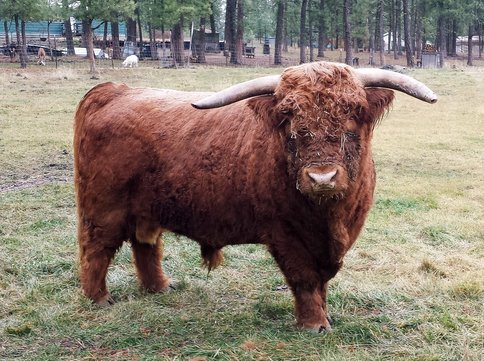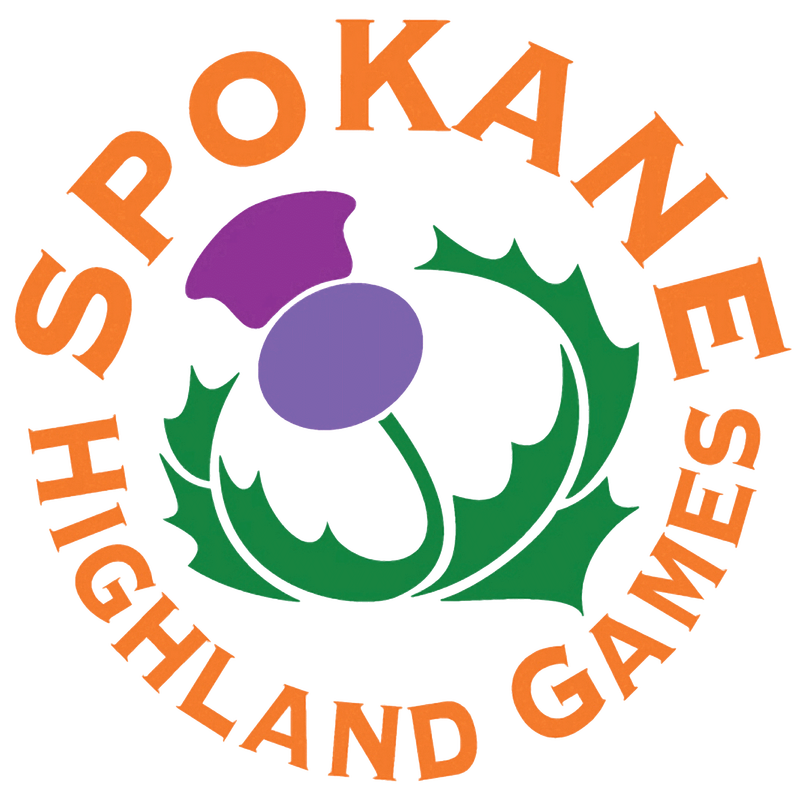Highland Cattle Exhibit
 Highland Bull
Highland Bull
Scottish Highland Cattle have been in the United States since the late 1880s. They require little shelter, are disease-resistant, and seem to thrive in conditions where other breeds might perish.
Highland cows and bulls are even-tempered and will warn you when you are overstepping your welcome. The cow is a devoted and attentive mother. She is also protective of her calf; watch for the dip of her head when she feels you are too close – it is a warning to back off. The bull is the ruler of his herd. We have watched our bulls step in to break up fights between others in the herd. The bull is also gentle with the calves, letting them eat alongside him, walk with him and hang around.
The Highland breed has a double hair coat – a long, coarse outer layer and a soft, wooly underlayer. This coat reduces the need for expensive barns and shelters. Because of the double coat, Highland Cattle do not need a layer of back fat for insulation. In early spring, they shed and enjoy a good combing to help the process. Highland Cattle manage well in warmer climates and produce less hair. The Highland breed produces a lean cut of meat from forage that other beef breeds do not willingly consume.
Highlands come in all colors and a mixture of colors. The traditional, accepted colors are white, silver-gray, black, yellow, red, and brindle (a mix of black and red). Cows will average 900 – 1200 pounds when mature, and bulls between 1500 – 1800 pounds. The cow's horns usually curve upward, while the bull's curve forward.
Contributed by Lois Bremner
Highland cows and bulls are even-tempered and will warn you when you are overstepping your welcome. The cow is a devoted and attentive mother. She is also protective of her calf; watch for the dip of her head when she feels you are too close – it is a warning to back off. The bull is the ruler of his herd. We have watched our bulls step in to break up fights between others in the herd. The bull is also gentle with the calves, letting them eat alongside him, walk with him and hang around.
The Highland breed has a double hair coat – a long, coarse outer layer and a soft, wooly underlayer. This coat reduces the need for expensive barns and shelters. Because of the double coat, Highland Cattle do not need a layer of back fat for insulation. In early spring, they shed and enjoy a good combing to help the process. Highland Cattle manage well in warmer climates and produce less hair. The Highland breed produces a lean cut of meat from forage that other beef breeds do not willingly consume.
Highlands come in all colors and a mixture of colors. The traditional, accepted colors are white, silver-gray, black, yellow, red, and brindle (a mix of black and red). Cows will average 900 – 1200 pounds when mature, and bulls between 1500 – 1800 pounds. The cow's horns usually curve upward, while the bull's curve forward.
Contributed by Lois Bremner
